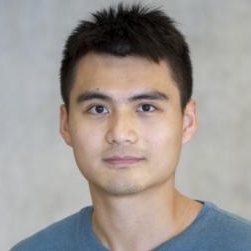Computational Imaging: Progress and Challenges
A special issue of Photonics (ISSN 2304-6732).
Deadline for manuscript submissions: closed (10 March 2024) | Viewed by 1813
Special Issue Editors
Interests: polarimetric imaging; polarimetry; deep learning; ocean optics
Special Issues, Collections and Topics in MDPI journals
Interests: computational imaging; polarization imaging
Special Issue Information
Dear Colleagues,
Computational Imaging Technology refers to a novel imaging method. It is different from the“what you see is what you get” information acquisition and processing methods of traditional optical imaging. With the development of new optoelectric devices and computing capabilities, the technology is experiencing significant growth. By using Computational Imaging Technology, we can subsequently receive abundant light field information. Indeed, information utilization and interpretation capability can be superior to traditional imaging, since it finally enables the realization of the “higher (resolution), longer (detection range), and larger (optical field of view)” requirements of photoelectric imaging.
This Special Issue invites manuscripts that explore the recent advances in “Computational imaging”. All theoretical, numerical, and experimental papers and reviews are welcome. Topics include, but are not limited to, the following:
- Principles and theories of computational imaging;
- Scattering imaging and non-field-of-view imaging;
- Three-dimensional imaging;
- Polarization imaging;
- Holographic imaging;
- Computational spectral imaging;
- Single photon imaging;
- Micronano Optics and computational imaging;
- Biomedicine and computational imaging;
- Artificial intelligence and computational imaging;
- Frontier problems in computational imaging.
Prof. Dr. Haofeng Hu
Dr. Pingli Han
Dr. Bofan Song
Guest Editors
Manuscript Submission Information
Manuscripts should be submitted online at www.mdpi.com by registering and logging in to this website. Once you are registered, click here to go to the submission form. Manuscripts can be submitted until the deadline. All submissions that pass pre-check are peer-reviewed. Accepted papers will be published continuously in the journal (as soon as accepted) and will be listed together on the special issue website. Research articles, review articles as well as short communications are invited. For planned papers, a title and short abstract (about 100 words) can be sent to the Editorial Office for announcement on this website.
Submitted manuscripts should not have been published previously, nor be under consideration for publication elsewhere (except conference proceedings papers). All manuscripts are thoroughly refereed through a single-blind peer-review process. A guide for authors and other relevant information for submission of manuscripts is available on the Instructions for Authors page. Photonics is an international peer-reviewed open access monthly journal published by MDPI.
Please visit the Instructions for Authors page before submitting a manuscript. The Article Processing Charge (APC) for publication in this open access journal is 2400 CHF (Swiss Francs). Submitted papers should be well formatted and use good English. Authors may use MDPI's English editing service prior to publication or during author revisions.







